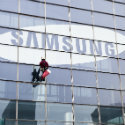
Samsung is the latest supplier to declare open season on the radio access network (RAN).
Samsung on Tuesday introduced new 5G RAN equipment products that, the company claims, are both fully open and fully virtualized. That means the products could potentially be mixed and matched with equipment from other vendors, and run on any x86 hardware.
"Samsung is a big believer in open systems," explained Alok Shah, Samsung's VP of strategy, marketing and business development. "It's what our customers are asking for."
Shah said Samsung's new 5G RAN products comprise a virtualized Central Unit (vCU), a virtualized Distributed Unit (vDU) and a wide range of radio units. He explained that Samsung first virtualized its CU in April last year, and now is offering a virtualized DU. Shah added that the company has also been offering open access to its products for more than a year, a position, he points out, that has been highlighted by tests with AT&T and Verizon.
Samsung said it will conduct vDU field trials in North America in the second half of this year.
Shah said the release of Samsung's latest products helps highlight the company's continued progress in the global wireless market. In the past few months, Samsung has announced new wireless networking supply agreements with U.S. Cellular in the US, Videotron and Telus in Canada, KDDI in Japan and Spark in New Zealand.
Such progress is noteworthy considering Samsung has not been brought in to T-Mobile's massive 5G network upgrade project; Samsung had been a 5G supplier to Sprint, which was acquired by T-Mobile in April.
Shah said Samsung enjoys a unique position in the US wireless market considering it supports operators' moves toward open and virtualized RAN, and also manufactures its own 5G silicon in a facility in Austin, Texas. That's an important distinction amid a growing push among US policymakers to obtain 5G equipment built in the US that adheres to open RAN principles. Such principles, driven by the Open RAN Alliance, seek to allow operators to deploy networks composed of equipment from more than one vendor – a break from traditional network designs.
Shah noted that Samsung isn't working completely alone, nor is it only selling software. He explained that Samsung partners with the likes of Qualcomm, HPE, Marvell and Xilinx for its basestation products. Samsung, for example, has a deal with HPE to work on 5G core software and edge computing offerings.
Shah points out that Samsung continues to offer a millimeter wave product that combines a 5G radio with a DU in order to make deployments more efficient in terms of space and power.
Samsung's announcement on open and virtualized RAN comes at an important time in the wireless industry. Nokia just last month announced its own slate of open RAN products. Momentum is also growing among smaller US operators for open RAN equipment that could replace equipment supplied by China's Huawei that the US government deems a threat to national security.
Such developments will undoubtedly put pressure on Ericsson to move further toward open RAN products.
Samsung is the third-biggest supplier of 5G equipment in the US, counting both AT&T and Verizon as customers, and sitting well behind Ericsson and Nokia.
— Mike Dano, Editorial Director, 5G & Mobile Strategies, Light Reading | @mikeddano
About the Author(s)
You May Also Like










